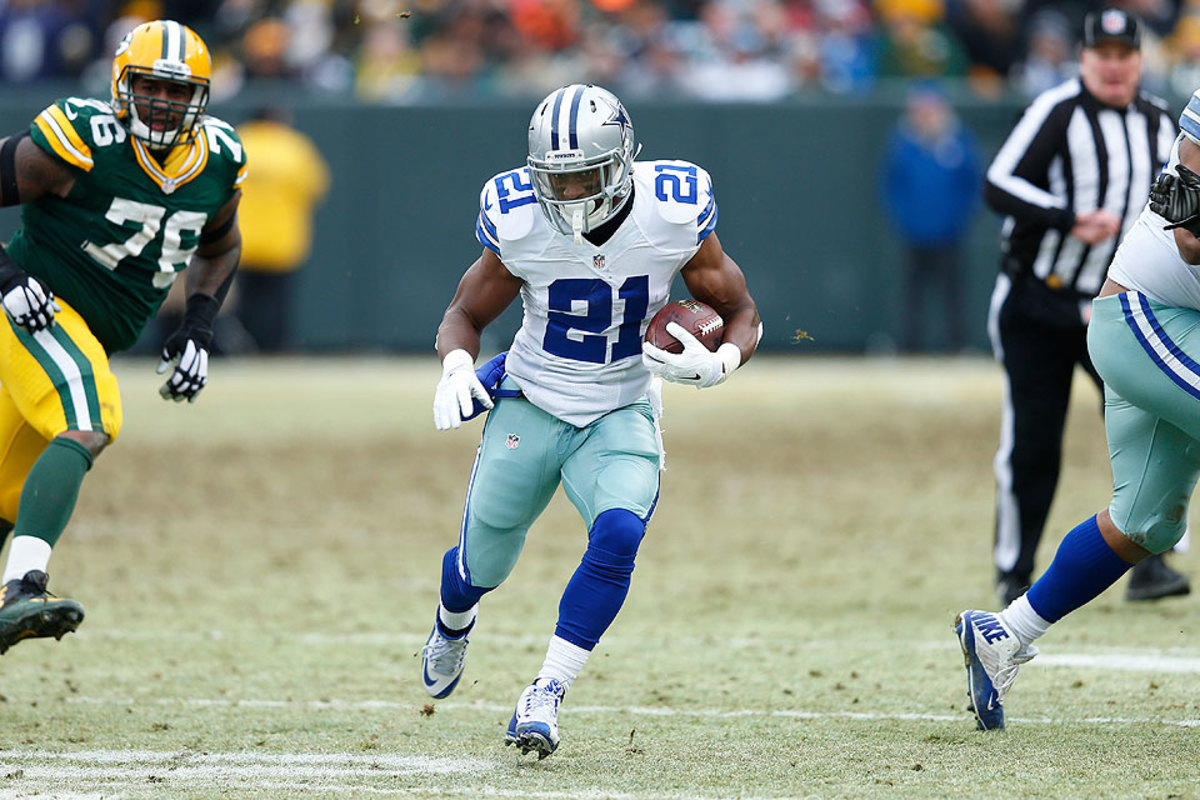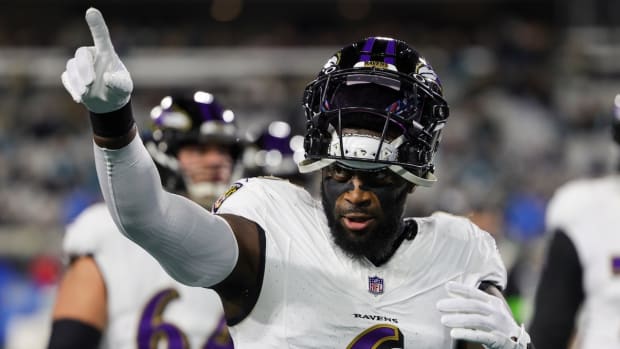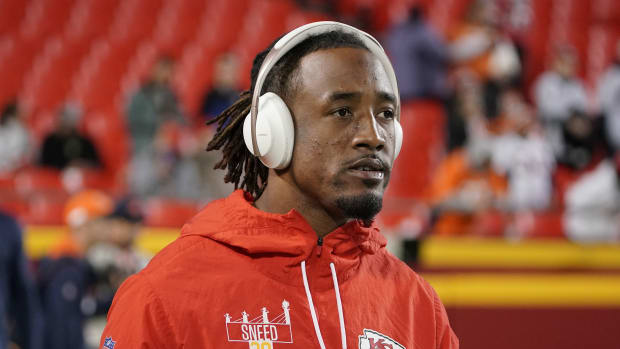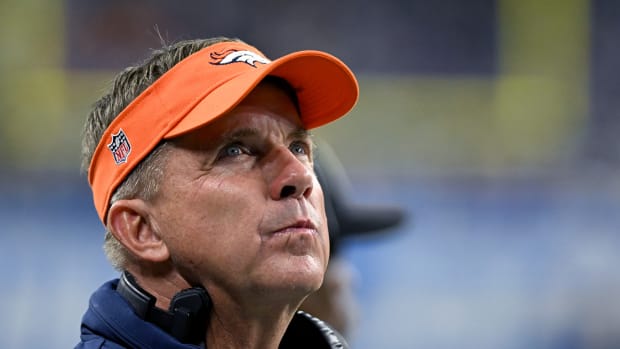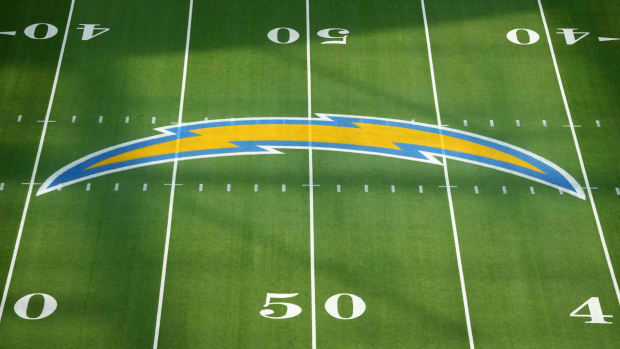Replacing DeMarco Murray: Randle Is Right
Three times in the past nine months, Cowboys running back Joseph Randle has made headlines that make him look ridiculous:
- “I didn’t want to take time to do it,” was the explanation offered for his decision not to pay for cologne and two pairs of underwear as he left a department store last October.
- Not long after calling his shoplifting arrest the “biggest mistake I've ever made in my life,” Randle made another one, getting busted for pot in February.
- And then, a few weeks ago, music stopped when he said that his former teammate, DeMarco Murray, “left a lot of meat on the bone” last year. Murray, of course, won the NFL rushing title handily, amassing 1,845 yards—a record for a franchise that’s boasted the likes of Emmitt Smith and Tony Dorsett.
At OTAs last week, Randle was softly but firmly censured by his head coach for the Murray comment. “We addressed that with Joe immediately,” Jason Garrett said, acknowledging that Randle’s sentiment could have been taken out of context and was not meant maliciously, but also adding, “you need to focus on doing, not talking.”
But here's the thing: Randle’s comment about Murray was astute.
Early in the offseason, I met with an AFC offensive line coach during Senior Bowl week in Mobile, Ala. He was an old-school, firm-handshake guy with an intimidating edge. Our conversation did not go particularly well. I later realized that things would have been different if: 1. I’d pronounced his name correctly upon greeting (always an insurmountable blunder); and 2. If I’d had more to ask him about the nuances of his club’s run-blocking philosophies. But, on the spot, I couldn’t think of any.
Taking this as a sign that I needed to learn more about the running game, I sojourned to Tempe, Ariz., a few months later and spent a week with Ryan Silverfield, recent Vikings offensive line assistant and current Sun Devils offensive consultant. Believing the best way to learn the ins-and-outs of run-blocking is to study the best of the best, Silverfield and I spent an entire day watching 2014 Cowboys film. He did most of the talking.
What stood out: left tackle Tyron Smith has rickety mechanics but the otherworldly athleticism to more than compensate. Center Travis Frederick is the inverse of Smith—a mechanical genius with only decent physical tools. Right guard Zack Martin has many intriguing positive traits countered only by a few very correctable negative ones. Left guard Ronald Leary is fine when he’s aggressive but subpar when he plays to not get beat. Right tackle Jermey Parnell is not worth the $13 million Jacksonville guaranteed him.
And,just as Randle intimated, running back DeMarco Murray left a lot of yards on the field.
Chip Kelly just spent $21 million in guarantees to bring Murray to Philadelphia because Kelly wants a runner who will just hit the hole. Murray does that—certainly more than LeSean McCoy, anyway. But Murray doesn’t do it with nearly the regularity a man of his build and skill set should. Murray’s strength is his ability to get square downhill, even off contact. His weakness is in his hips, which are a little stiff, and his feet, which are sometimes too heavy to maintain balance when changing direction. But based on some of the decisions Murray made last season, you wonder if he even knows these things about himself (see snapshots below).
Randle averaged 6.7 yards a carry off the bench in 2014. He can average well over 5.0 getting 20-plus carries a game as a starter as long as he plays with the discipline that Murray sometimes lacked. Not to stoop to giving fantasy advice, but the third-year pro and first-time starter would not be a reach late in the first-round of your 12-team draft.
Randle’s only obstacle to 1,500-plus yards is Darren McFadden, a fascinating wild card in this backfield equation. In between hamstring pulls and ankles sprains, McFadden has proven to be an excellent straight-line runner. But if Murray is “plywood” on the stiffness scale, McFadden is “oak.” My good friend Greg Cosell of NFL Films once said it best: it’s like McFadden’s lower body and upper body are fused together. An inability to make people miss was something previous Raider coaching staffs didn’t like about the former first-round running back.
But in Dallas, McFadden won’t have to make people miss. Because it’s not a question of whether the Cowboys have the best run-blocking O-line in the league, it’s whether they have the best run-blocking O-line of this century. (Off the top of my head, other contenders: the 2011-12 49ers and the 2005 Seattle Seahawks.)
Collins: How It All Went Down
A first-round talent out of LSU, La’el Collins became radioactive just days before the NFL draft when his name was linked to a double homicide in Baton Rouge. Robert Klemko tells the inside story of how Collins' agents tried to salvage his stock, and the winding journey that put him across the table from police detectives and Jerry Jones. FULL STORY
For the past two years, the Cowboys O-line was under the instruction of Bill Callahan, the reputed owner of bafflingly inconsistent people skills but inspiringly sharp teaching skills. Callahan, a major proponent of zone running concepts, is a debated, unsolvable puzzle amongst people around the league. But what’s not debatable is that this Cowboys front five played exceptionally well under him.
Now Callahan is in Washington, orchestrating another zone-running scheme that’s ripe with talent, both up front and in the backfield. Meanwhile, Frank Pollak, a long time Callahan disciple, will take over the O-line coaching in Dallas.
With the immense talent in personnel, and Pollak’s experience under Callahan, let’s assume Dallas’s run-blocking remains dominant. Most likely it will be even more dominant. Undrafted rookie La’el Collins, a first-round talent, has entered the mix. Tyron Smith is only 24. Travis Frederick, the best reach-and-seal interior blocker in the game, is entering just his third season. Zack Martin's in his second.
Running behind this group is like singing the Star Spangled Banner: the less creative you try to be, the better job you’re likely to do.
This in mind, it could be McFadden who winds up prospering the most in 2015. He’s not creative because he can’t be—that fused body won’t allow it. He’s a pure, explosive north/south runner. Randle, on the other hand, has light feet and hips that swivel. If he starts “tasting some of the meat”—as Murray put it, in his polite response to his former backup’s comment—Randle too might get hasty and clever. Let’s hope that Randle’s lesson learned from skipping the Dillards checkout line helped teach him the virtue of patience and discipline. If he runs with that in 2015, he’ll keep McFadden on the bench and contend for a rushing title.
Follow The MMQB on Facebook, Twitter and Instagram.
[widget widget_name="SI Newsletter Widget”]
































